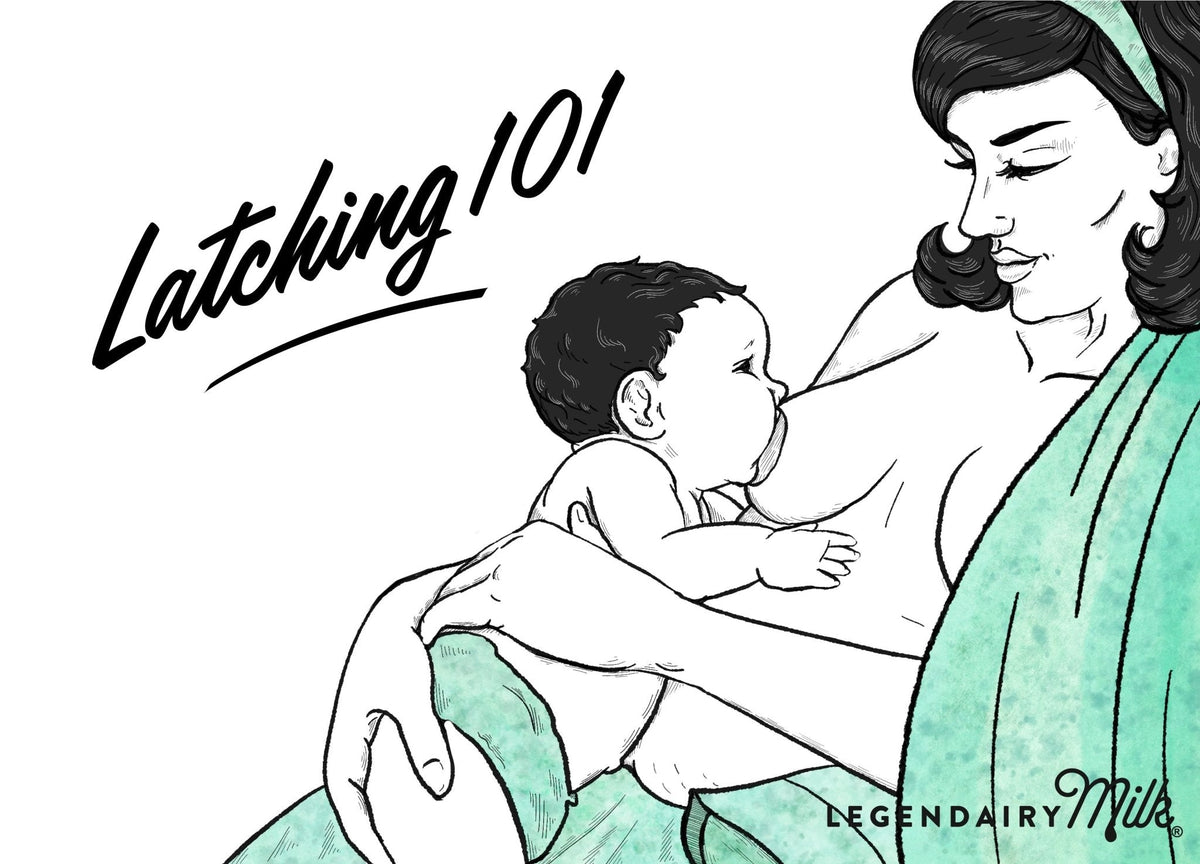
Latching 101 - The Steps of Latching
|
5 min
|
5 min
Achieving an effective latch for your baby is a team effort. Your baby gives you cues for when they are ready to breastfeed and you respond by holding them in a breastfeeding position that allows them to do their part of nursing effectively and efficiently. Breastfeeding should be pain free and enjoyable for both you and your baby. It should never hurt. Breastfeeding has more benefits than just being food for your little one. It is a way to comfort your baby, bond together, offer health benefits to you and influence every aspect of your baby’s growth and development.
Breastfeeding promotes wide jaw growth and a wide palate that is drawn down and away from the nasal cavity when breast tissue fills your baby’s mouth. Their tongue presses the breast against the roof of the mouth widening the palate and creating more space for the sinuses. The face, jaw and oral cavity including the dental arches, palate and teeth develop differently for babies who are fed from a bottle versus directly at the breast.(1)
Breastfeeding involves a series of reflexive movements to help your baby move towards your breast, latch and drink your milk.(5) Being able to practice every time they breastfeed helps the brain remember which muscles worked together to get the job of latching and feeding done. Using the correct muscles helps your baby feed best. If there are speed bumps like tension in muscles or oral restrictions, your baby may alter how they latch.Those compensations have a ripple effect into other areas of the body and future developmental milestones.
Support your baby with your hand on their shoulder blades. You can use your fingers and thumb to add additional neck support if necessary, but do not hold the back of their head. When the back of their head is being touched during the latching process, their reaction is to press their head back into your hand. They may fuss or refuse to latch because of it. Holding their head can change their ability to tilt their head back, chin up and instead their head is brought forward and chin down towards their chest. Their hyoid bone won’t be able to come forward in line with the other parts of their mouth and jaw for a deep latch. Holding the back of their head can stop the rooting, gape and tongue extrusion reflexes.(2)
If you or your baby are having a hard time with any stage of latching or breastfeeding or your baby seems uncomfortable, get in touch with a skilled IBCLC to figure out why and determine the best solutions for you and your baby.


